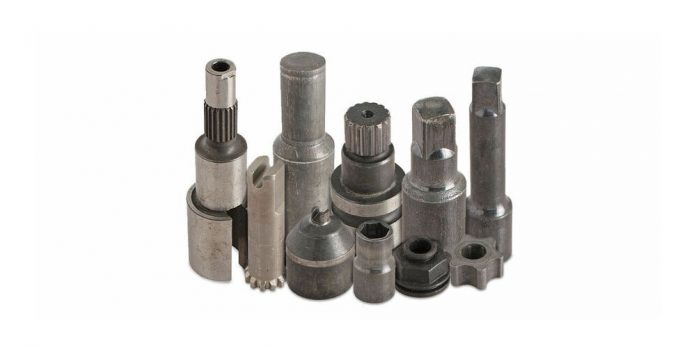Cold forging is a manufacturing process used for metal shaping. In cold forging, the bar stock of metal is inserted inside a die. A second die is used to squeeze the metal into a pre-determined shape and form. Sometimes the process involves more than one die depending on the desired shape. In some instances, a pressure hammer is used in the place of a die. The term cold forging stems from the fact that the process is done at room temperature. This sets it apart from hot forging, which is done at extremely high temperatures. In this post, we learn more about cold forging and its applications.
The process of cold forging
This manufacturing process takes place in the following phases;
1. Lubricating
This is the first step of the cold forging process. In this phase, the bar of metal, sometimes known as the workpiece, is treated using a lubricant. The lubricant’s role is to keep the material (metal) from sticking to the die or the hammer. It also helps to keep it cool throughout the manufacturing process. This is important because the compressive forces tend to produce temperatures of up to 450o.
2. Insertion
After lubricating and preparing the metal, the next step is to insert the piece of metal into the die. Note that the die typically takes the form and shape of the desired outcome. The die usually has two sections. One of the sections is generally attached to a hammer. The hammer is used to strike the metal to help produce the intended shape. It works by deforming the piece of metal so that it can be reduced to a new form. The other section lays beneath the piece of metal.
3. Striking
Also known as the stroke, this is when the piece of metal is exposed to compressive forces. The stroke is usually produced by one of three mechanisms (hydraulic, pneumatic, or mechanical). Regardless of the technique, a shaft is applied with a hammer to the cold forging workpiece at significant force. These motions occur continuously within a scale of milliseconds. Sometimes, the hammer has to be dropped several times continually to achieve an exact contour.
4. Waste removal
In cold forging, waste materials are formed after the process is complete. The waste material is known as flash. It usually forms around the die or both and extends from the body. The flash is essential. This is because it prohibits the flow of the metal as the hammer strikes. By doing so, it helps create a perfect impression. It also forces the metal to fill the die. Therefore, the waste material is not removed immediately. Instead, it is removed after the process is complete.
After this, the final product is removed from the die. There are different methods of removal. The one you choose depends on the part. Most of the time, the removal is done using robotic arms and conveyor belts.
Applications of cold forging
Cold forging can be applied in manufacturing;
- Mining bits
- Trenching teeth
- Fastening tools
- Motor housing parts
- Aluminum radiators
Conclusion
Cold forging is one of the cheapest manufacturing processes. This factor can be attributed to the fact that the process does not require any heating. However, the process requires heavy machinery.











